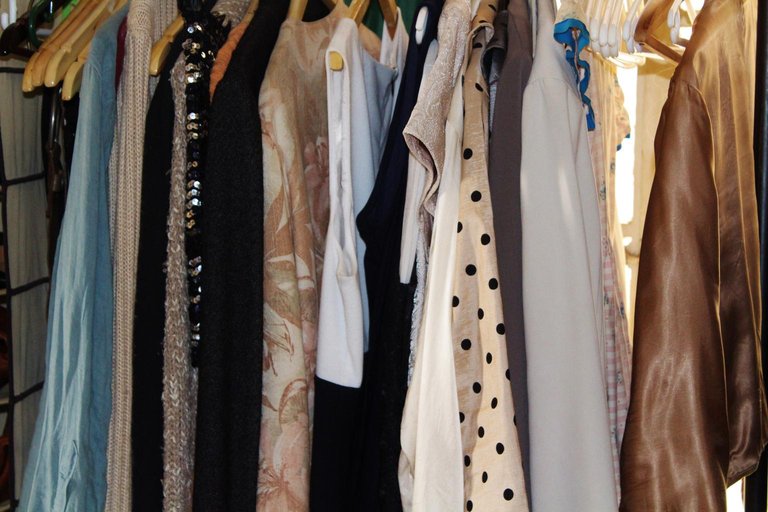**NFTs In Fashion **
For this assignment, I wanted to discuss the topic of NFTs in fashion since it was particularly relevant to me. Being a fashion design minor with dreams of working in the field someday, I am particularly interested in how non-fungible tokens (NFTs) are helping to authenticate products, document ownership, and even add value to consumers and brands alike. Fashion does not stay the same, and the emergence of blockchain technology is showing us what the future has in store for the way that we wear, purchase, and sell garments and accessories. The idea of NFTs providing authenticity and traceability to the world of fashion interests me, as it answers the age-old issues of counterfeiting and authentication when reselling. Since already luxury brands have already begun experimenting with this technology, I believe that the future of fashion will greatly benefit from the use of NFTs.
The Value of NFTs in Fashion
NFT is an exclusive digital token, which establishes authenticity and bears witness to a digital asset. Since fungible commodities, that is, cash, are mutually substitutable, non-fungible ones are one-of-a-kind and not substitutable. In the apparel industry, where one of the biggest issues is counterfeiting, NFTs come in as a game-changer with an unassailable digital pedigree that ensures a product's authenticity, provenance, and origin. The biggest benefit of NFTs in the case of fashion is the representation of the value of the good being represented. Luxury fashion has already begun utilizing NFTs for the authentication of items. There are companies like Gucci and Louis Vuitton that have tried blockchain authentication systems so that the clients get authenticated products. This has application in times when counterfeit luxury items are flooding the market, and the consumers cannot tell the difference between the real and the false ones. Using the application of NFTs, one would be able to track the sale history of the good to the manufacturing source, and consumers would be able to authenticate.
NFTs in the Secondary Market
The second interesting application for NFTs in the fashion world is for the secondary market. It has always been hard to sell designer handbags or limited-edition sneakers, as nobody knows whether the product is genuine or not. NFTs are like digital tickets for the product that specify where the product has been produced, who the previous sellers were, and whether it is genuine or not. Perhaps it is the renaissance for the secondary market not to counterfeit but to get the buyers to believe in the transaction. For instance, sneaker culture, where consecutively resold limited-edition sneakers are sold for dozens of times the price of the sale price. Nike, for one, has already harnessed the potential of blockchain technology to authenticate its products in such a way that every resale transaction would be backed with cryptographic proof of provenance. This not only benefits consumers but also ensures the credibility of the brand with the prevention of counterfeiting.
NFT Memberships and Their Monetary Value
Apart from authentication, the NFTs are used for membership and luxury experiences for the companies as well. There are specific fashion companies that introduced the membership based on the NFT, which could potentially be resold and transferred in the secondary market. Types of NFTs are access badges, digital in form, that provide the owner with exclusive benefits like privileged access to the collection, show invites, and exclusive discounting. What is fascinating, though, is the way that these membership NFTs are valuable. While the traditional non-transferable loyalty schemes used by brands are not, the transferability of the NFT membership allows it to be bought and sold, establishing a whole new economy around the exclusivity of the fashion brand. It's part of the growing demand for bespoke, differentiated experiences as opposed, for example, to the purchase of the luxury handbag per se. It can include backstage access, one-to-one designer access, or digital fashion pieces to wear in virtual environments.
The Future of NFTs in Fashion
The possibilities of NFTs in the fashion world have unlimited boundaries in the coming years. As virtual fashion and the metaverse become more and more a reality, NFTs will have space in the fashion world. Designers already work in collaboration with virtual items of apparel that exist in the virtual world, and users can wear exclusive items in virtual or even augmented reality environments. These authenticated digital garments, through the help of NFTs, can become the new means of expression, eliminating the line of demarcation drawn between the virtual and the real in the fashion world. As someone who loves fashion, I'm excited about the way technology is transforming the way we interact with clothing and accessories. While the adoption of NFTs not only changes the way authentication and secondary markets work, but it also facilitates new business models and creative opportunities. With examples like the implementation of NFT authentication, digital apparel collectibles, or membership subscriptions, the application of blockchain technology in the apparel business surely makes it game-changing. Overall, the NFTs are the future of the fashion world, where technology and design meet in fresh, exciting ways. With the ability to authenticate, create value in secondary markets, and deliver unique experiences for brands, they are revolutionary for consumers and designers alike. Looking forward to my future career as a designer, I anticipate discovering more about how technologies are changing the future of the fashion world and our current understanding of the ownership of fashion.
